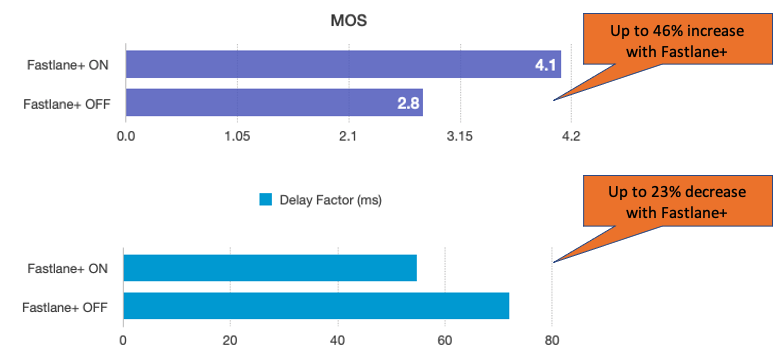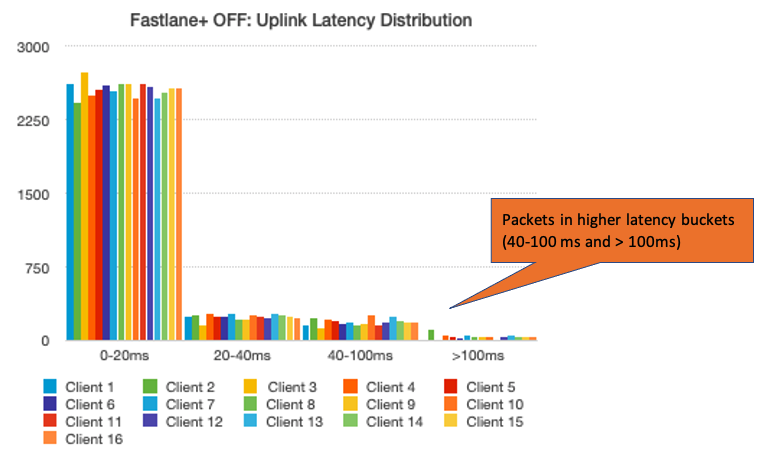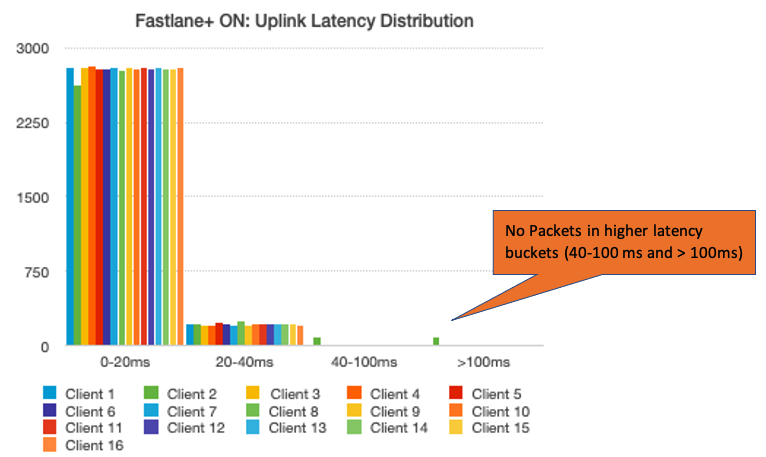- The best free AI courses and certificates in 2025 - and I've tried many
- I replaced my laptop with Microsoft's 12-inch Surface Pro - here's my verdict after two weeks
- The Nanoleaf Skylight is one of my favorite smart lights (and just hit its lowest price)
- This top-rated Dyson hair dryer is on sale for the lowest price yet on Amazon
- Anthropic's latest Claude AI models are here - and you can try one for free today
Cisco introduces Fastlane+ with advanced multi user scheduling to revolutionize real-time application experience – Cisco Blogs

Cisco and Apple continue to work together to deliver better experiences for customers through collaboration and co-development. Our latest project, Fastlane+, builds on the popular Fastlane feature by adding Advanced Scheduling Request to take QoS management a step further by scheduling and carving out airtime for voice and video traffic on Wi-Fi 6 capable iPhone and iPad. This facilitates a superior experience with latency-sensitive collaboration applications such as WebEx and FaceTime.
What is FastLane+, and why do we need it?
First and foremost, let’s take a look at the motivation behind Fastlane+. The 802.11ax standard introduced OFDMA and MU-MIMO as uplink transmission modes to allow scheduled access-based uplink transmissions. This allows the access point (AP) to dynamically schedule uplink OFDMA or MU-MIMO based on the client’s uplink traffic type and queue depth. This decision is made on a per Access Category basis and at the start of every Transmit opportunity (TXOP) with OFDMA used for latency centric low bandwidth applications. In contrast, MU-MIMO is used when higher bandwidth is required.
With Fastlane+, the Cisco AP learns the client’s uplink buffer status using a periodic trigger mechanism known as Buffer Status Report Poll (BSRP). Nevertheless, the client devices may not be able to communicate their buffer status to the AP in a timely manner due to MU EDCA channel access restrictions and possible scheduling delays in dense environments. Additionally, the AP may not always be able to allocate adequate resource units that fulfill application requirements. Because of this, a better approximation of uplink buffer status is critical for efficient uplink scheduling.
Next, let’s compare 802.11ax standards-based approaches for uplink scheduling- UL OFDMA and Target Wakeup Time (TWT). As highlighted in the chart below, with UL OFDMA, the AP has absolute control over uplink scheduling, while in the case of TWT, the client can pre-negotiate TWT service periods. A compromise thus needs to be made between the AP and client to improve uplink scheduling efficiency in a dense RF environment with latency-sensitive traffic.
Fastlane+ is designed to approximate better the client’s buffer status based on application requirements indicated by the client. This estimation policy significantly reduces BSRP polling overhead as compared to the default BSR based UL OFDMA scheduling. Along with obtaining key parameters for active voice and video sessions to improve uplink scheduling efficiency, Fastlane+ also solicits periodic scheduling feedback from the clients.
In a nutshell, Fastlane+ enhances the user experience for latency-sensitive voice and video applications in a high-density user environment by improving the effectiveness of estimating the uplink buffer status for the supported 802.11ax clients.
Key considerations for Fastlane+
Fastlane+ is initiated for latency-sensitive voice and video applications like WebEx, FaceTime, and others, whose traffic characteristics can be better approximated. Fastlane+ is indicated in DEO IE by the AP and Advanced Scheduling Request (ASR) specific information from the clients, including ASR capability, ASR session parameters, and ASR statistics. This information is sent using Vendor-Specific Action frames that are protected using PMF (protected management frame).
Latency becomes a concern only when there is enough contention in the medium due to high channel utilization. Consequently, Fastlane+ based uplink TXOPs are allocated only when the channel utilization is higher than 50%.
System overview for Fastlane+
The diagram below shows a bird’s-eye view of an end-to-end system to support Fastlane+. Fastlane+ specific configurations can be managed from the controller’s GUI and CLI. Uplink Latency statistics provided by the clients to the AP are also displayed on the controller. These latency statistics are on a per client basis and triggered with/without an active ASR session.
Fastlane+ benefits:
To better understand the benefits of Fastlane+, let’s first define key performance indicators of a typical voice and video application. Mean opinion score (MOS) is a standard measure for quality of experience for voice applications. It is quantified on a scale of 1 – 5, with 5 being the highest and 1 lowest. To put things in perspective, 3.5 is the minimum requirement for service provider grade quality.
For measuring video quality, we use the Delay factor. This evaluates the size of the jitter buffer to eliminate the video interruptions due to network jitter. The lower the delay factor (in milliseconds), the better the video quality.
Test considerations:
Results below are from a typical collaboration application with simulation tests performed under a high channel utilization and controlled RF environment. 16 numbers of Wi-Fi 6 capable iPhone in 80Mhz bandwidth were used.
Adios to choppy voice and video calls
With Fastlane+, you get a better Wi-Fi experience when you are collaborating with friends and colleagues. It doesn’t’t matter if you are in highly congested RF environments such as schools, offices, high-density housing, shopping malls, airports, or stadiums; Fastlane+ has you covered. So, when we’re all ready to come back, the network will be ready and waiting.
Fastlane+ is enabled by default on 802.11ax capable iPhone and iPad devices running iOS 14 or later. On the infrastructure side, it is currently supported on the Cisco Catalyst 9130 Access point. On AireOS WLC platforms, the 8.10 MR4 (8.10.142.0) release has CLI based support of the feature. On Catalyst 9800 Series WLC platforms, the 17.4.1 release has CLI and GUI (client data monitoring) support. Whereas, configuration tab in GUI will be in later releases. Please note, the Fastlane+ feature is listed as “Advanced Scheduling Request” in the CLI and GUI.
For additional details on Fastlane+ check out this video: Fastlane+
Learn more about Catalyst 9100 series Access Points and Cisco Catalyst 9800 Wireless Controllers.
For more information about the Cisco and Apple partnership, check out this link.
Check out our Intent-Based Networking video channel
Subscribe to the Networking blog
Share:






